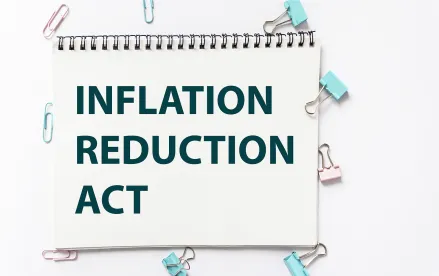Although the Guidance comes as a relief for clean energy project developers, who have thus far been required to speculate as to what steps they must take to qualify for the domestic content bonus, it may also prevent challenges as manufacturers will be required to disclose certain costs. Furthermore, savvy domestic manufacturers of clean energy products can now arrange their manufacturing processes and supply chains to take advantage of the intended boost in demand for their products.
Domestic Content Bonus Under the IRA
Under the IRA, and as we discussed in a prior alert, assuming a project meets the prevailing wage and apprenticeship requirements, an applicable project can earn a 10% investment tax credit (ITC) or production tax credit (PTC) bonus if it satisfies the domestic content requirement. To satisfy the domestic content requirement a project must meet both the Steel or Iron Requirement and the Manufactured Products Requirement.
Construction Materials - The Steel or Iron Requirement
The Steel or Iron Requirement is met if all manufacturing processes for any steel or iron items that constitute “Applicable Project Components” take place in the United States – these are construction materials that are primarily made of steel or iron that are structural in function. In other words, without these materials, things fall down. The Guidance clarified that the Steel or Iron Requirement does not apply to steel or iron used in non-structural components or manufactured product components or their subcomponents.
The Manufactured Products Requirement
The Manufactured Products Requirement is met if all applicable project components are, or are deemed to be, produced in the U.S.
One way to determine if a project’s components are deemed to be produced in the U.S. is to prove that the manufactured products meet an Adjusted Percentage Requirement. This requirement depends on the type of project (e.g., solar, onshore wind, offshore wind, etc.), and the date project construction begins.
The Guidance specifies the appropriate method for assessing whether a project meets the Adjusted Percentage Requirement and introduces the Domestic Cost Percentage, where if the Domestic Cost Percentage exceeds the Adjusted Percentage Requirement, then the applicable project will qualify for the domestic content bonus. The Domestic Cost Percentage is calculated by dividing the Domestic Manufactured Products and Components Cost (the sum of the costs of the components manufactured or mined in the U.S. for an applicable project) by the Total Manufactured Products Costs (the sum of the costs of all of the manufactured products and components for an applicable project).
Safe Harbor for Certain Project Components
There remains some ambiguity about whether certain components should be evaluated under the Steel or Iron Requirement or the Manufactured Product Requirement. To alleviate some of the confusion, the Guidance offers a safe harbor for project developers, where the IRS, with the assistance of the Federal Transit Authority, identified common project components for utility-scale photovoltaic systems, land-based wind facilities, offshore wind facilities, and battery energy storage systems, and categorized each component under either the Steel or Iron Requirement or the Manufactured Product Requirement. For example, the Guidance categorized the following components with respect to utility-scale photovoltaic systems:
|
Applicable Project Component |
Categorization |
|
Steel photovoltaic module racking |
Steel/Iron |
|
Pile or ground screw |
Steel/Iron |
|
Steel or iron rebar in foundation |
Steel/Iron |
|
Photovoltaic tracker |
Manufactured Product |
|
Photovoltaic module |
Manufactured Product |
|
Inverter |
Manufactured Product |
Certifications Procedures
The Guidance outlined the procedures that a taxpayer must follow to obtain the domestic content bonus from the IRS. Notably, taxpayers must file a Domestic Content Certification Statement using IRS Form 3468, providing details regarding the applicable project (e.g., type, location, and the date the project was placed in service).
Further Guidance
The current Guidance is a precursor to proposed regulations we expect will be issued later this year or early next year. The proposed regulations will likely be applicable to tax years ending after May 12, 2023. Importantly, taxpayers will be allowed to rely on the rules provided in the Guidance if their project begins construction before the date that is 90 days after the proposed regulations are published.




 />i
/>i

